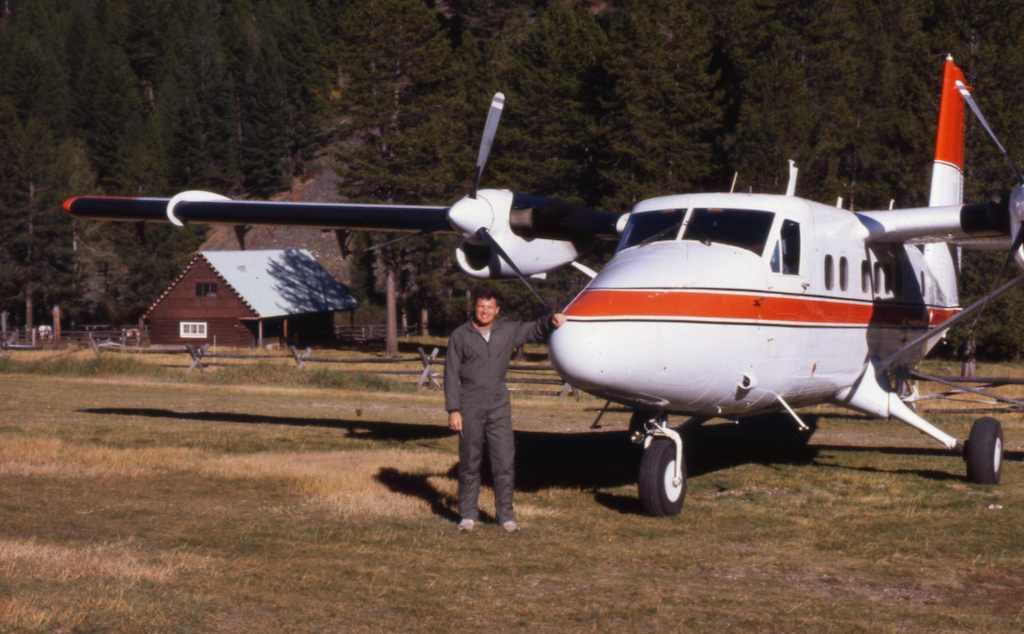Know Your Aircraft’s Specific Handling Characteristics, Part 1

In “most” airplanes that you have flown, a go-around requires adding go-around power, bringing the nose up to about 5-10 deg. above the horizon, and repositioning the flaps at specified speeds as the aircraft accelerates. However, there are significant exceptions to this.
After touring the Grand Canyon, a de Havilland DHC-6 Twin Otter operating with the call sign “Canyon Five” reported 5 sm northwest of the airport and the local controller cleared the flight to land on Runway 21. The two air traffic controllers who were on duty in the tower described the airplane’s approach as normal, and each controller diverted his attention from observing Canyon Five, which was on short final, to locating traffic that was entering the traffic pattern.
When the air traffic controller looked back at the runway, Canyon Five was angling back toward the centerline of the runway in an unusually nose-high attitude. The Twin Otter struggled to climb as it passed the tower, but only reached an altitude of 150 to 200 ft. above the runway. The aircraft bounced and flew another 1,000 ft. in a near-stall condition before the wingtip touched the runway. At this point, the aircraft rolled toward the left and crashed into trees on a hill on the east side of the runway. Unfortunately, the impact killed 10 passengers and seriously injured nine others.
The flaps on the Twin Otter are particularly effective for short-field operations, especially when deflected to the full position. The flap system on the aircraft’s wing utilizes both inboard and outboard flaps. Each aileron is hinged to its corresponding outboard fore flap.
Even though the slotted flaps produce an impressive increase in maximum lift, it also results in reducing the critical angle of attack to a much lower amount. Thus, if a flight crew attempts to do a “normal” go-around by pulling back on the control yoke while adding power, the resulting motion in the Twin Otter results in the airplane pitching to a nose-high, power-on stall. According to a special warning in the aircraft operations manual for the DHC-6, during a go-around with full flaps, the airplane’s deck angle is below the flight path.
The NTSB determined the probable cause of this accident included improper pilot techniques and crew coordination during the landing attempt, bounce and attempted go-around.
Our second example also involves a Twin Otter, but I want to add the caveat that this isn’t an attempt to blemish this wonderful special-mission aircraft. I had the pleasure of being a captain in the Twin Otter for several aerial firefighting seasons and thoroughly enjoyed flying this capable aircraft. It was during this time in which example No. 2 occurred.
After an embarrassing accident in our firefighting unit, the chief pilot and the unit’s two other senior check airmen went to the simulator for their yearly proficiency checks. Previously, all flight training and standardization check rides had been done within the organization and had not utilized simulators.
According to the unit’s regional air officer, “The three pilots were some of the highest skilled pilots and excelled at existing standards.” However, when the simulator instructor failed the engine during takeoff, the chief pilot incorrectly tried to counter the loss of power and lift. The aircraft did an abrupt roll into the dead engine and crashed. The instructor put the simulator back at the takeoff point and had the chief pilot try the maneuver again, thinking that maybe the pilot was just a bit rusty or needed to get a feel for the sim. For the second time, the pilot crashed the “aircraft” during the simulated engine failure. The same problem occurred with the other check airmen. All three of these check airmen were unable to maintain proper control of the aircraft when an engine was failed during a critical portion of the takeoff.
The simulator instructor wrote a frank assessment to the organization. In it, he stated: “Following is a summary of the weaknesses: lack of standard operating procedures; each pilot ‘did it their own way;’ even a minor abnormality created a major loss of crew situational awareness.”
Each of these pilots had more than 10 years of experience flying the Twin Otter. These were highly experienced with thick logbooks in excess of 15,000 total flight hours. However, having a thick logbook doesn’t ensure that a pilot is adequately versed and proficient in the specific handling characteristics of any aircraft.
Part 2 will cover what worked in your previous aircraft may actually have the opposite effect in another.



